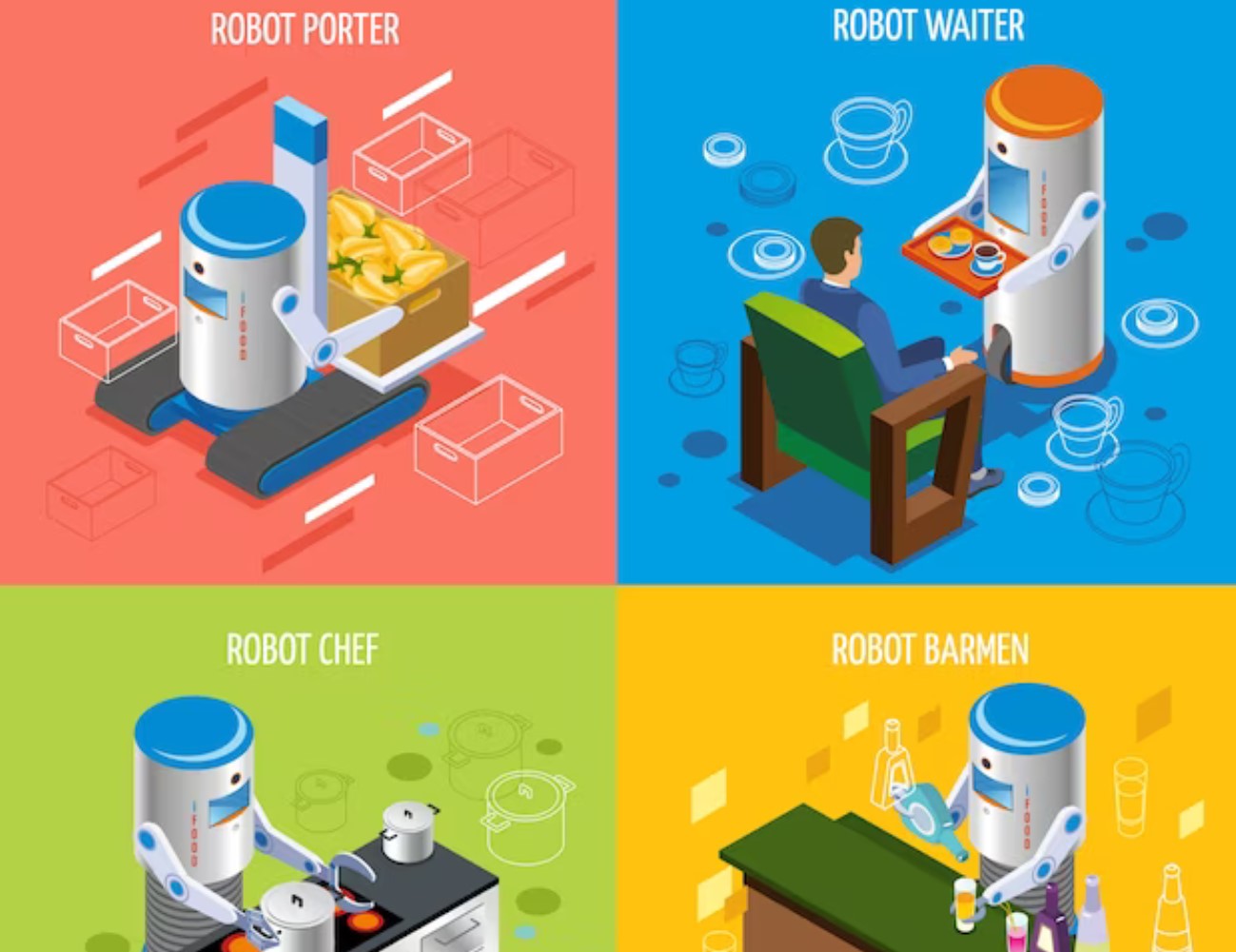 25 Mar, 2021
25 Mar, 2021
Viện Robotics
Vài tuần trước, hàng triệu người đã xem xe robot (xe Curiosity) đáp xuống sao Hoả, một biến cố có ý nghĩa trong thám hiểm không gian. Robot này đã gửi các ảnh video và viết tin cập nhật từ tài khoản Twitter riêng của nó cho hàng triệu học sinh trong trường học. Robot này đã được phát triển bởi Phòng thí nghiệm sức đẩy phản lực Jet Propulsion Lab (JPL), một tổ chức của NASA có thuê nhiều sinh viên CMU trong những năm gần đây. Phần mềm trên xe robot này cũng được phát triển bởi Viện Robotics của CMU.
CMU nổi tiếng về chương trình Robotics của nó như một trong những đại học hàng đầu trong lĩnh vực này. Mỗi năm chương trình này đề nghị người trong công nghiệp và các giáo sư gợi ý các ý tưởng cho dự án capstone về robotics nơi sinh viên sẽ xây dựng robot theo yêu cầu chuyên môn. Vì toà nhà Robotics ở bên cạnh toà nhà Kĩ nghệ phần mềm nơi tôi làm việc, tôi thường ghé qua và quan sát các robot được xây dựng và thỉnh thoảng thảo luận với các sinh viên về dự án capstone của họ.
Một trong các robots được xây dựng năm nay là “Robot phục vụ nhà hàng” có thể nói chuyện với khách hàng và đem đồ ăn, cà phê, đồ uống và những vật nhỏ tới bàn. Một sinh viên giải thích: “Người chủ nhà hàng gợi ý một ý tưởng và cho chúng tôi các yêu cầu. Tất nhiên nó vẫn là bản mẫu nhưng ông ấy nói nếu chúng tôi có thể làm số lớn hàng nghìn robot với giá phải chăng, sẽ có thị trường tốt cho nó. Robots đang hấp dẫn nhiều cho kinh doanh nhà hàng vì khách hàn, đặc biệt trẻ nhỏ muốn xem robot.”
Tôi ngồi vào bàn và trao đơn hàng cho robot để đem cà phê tới cho tôi. Cuộc đối thoại là dễ chịu vì robot được lập trình để nói một cách lễ phép và hỏi câu hỏi đặc biệt: “Ông dùng cà phê đen hay cà phê sữa và đường?” và tôi bị ấn tượng. Robot quay lại sau vài phút và đem cho tôi một cốc cà phê. Tất nhiên, cốc rỗng vì sinh viên không muốn đổ cà phê vào robot của họ đầy những dây điện và mạch máy tính.
Một giáo sư giải thích: “Ngày nay lĩnh vực robotics là “nóng” vì nhiều công ti đang tự động hoá hệ thống của họ. Nhiều robots được xây dựng bằng phần mềm trí tuệ nhân tạo cho nên chúng tương tác với người tốt hơn. Tôi nghĩ trong vòng mười năm ông sẽ thấy nhiều robots trong văn phòng và ở nhà mọi người. Ngày nay ông có thể mua một robot lau nhà với giá một trăm đô la nhưng giá đang sụt nhanh vì nhiều công ti đang xây dựng robots.” Tất nhiên, tôi đã thấy “Roomba” robot lau nhà được làm bởi công ti iRobot và robots lau bể bơi, bếp, và nhà hàng cũng như các robots được dùng trong các cơ xưởng để nâng các vật nặng hay để làm ô tô.
![]()
Tôi hỏi: “Ông nghĩ giá của robot sẽ thế nào? Yêu cầu là gì để vào lĩnh vực này nếu sinh viên muốn học nó?” Ông ấy giải thích: “Tám mươi năm trước máy tính lớn giá hàng triệu đô la, chỉ chính phủ hay công ti lớn mới đảm đương được nó. Máy tính cá nhân đã làm thay đổi điều đó và đưa máy tính vào mọi nhà và văn phòng với giá một nghìn đô la. Ngày nay chúng ta có điện thoại thông minh mà mọi người có thể mua với giá một trăm đô la. Cùng điều đó sẽ xảy ra cho robots. Ngày nay một số robots vẫn còn đắt nhưng vài năm nữa kể từ giờ, khi nhiều người mua chúng, nhiều công ti sẽ làm chúng và giá sẽ hạ xuống. Để học robotics, các bạn cần có nền tảng khoa học chắc chắn, giỏi toán và kĩ năng máy tính. Hiện thời phần lớn các chương trình trong robotic là dành cho sinh viên theo đuổi bằng thạc sĩ và tiến sĩ cho nên các bạn phải có bằng cử nhân trong khoa học máy tính, kĩ nghệ điện hay điện tử, hay toán học để được xét vào.”
Tôi hỏi sinh viên: “Robot thú vị nhất nào đã được xây dựng ở đây?” Anh ta trả lời bằng nụ cười lớn: “Chúng tôi đã xây dựng các robots lau nhà, giặt giũ, dọn rác và thậm chí lái xe nhưng vài năm trước, một người chủ công ti đã đề nghị chúng tôi xây dựng một con robot có thể chăm sóc chó của ông ấy khi ông ấy bận. Cho nên chúng tôi làm các robots có thể đưa cho ra vườn và để chó làm bất kì cái gì nó cần và đem chó trở vào nhà. Con robot này vận hành tốt nhưng chó thì không. Nó làm chó sợ quá tới mức chó “vãi đái vãi cứt” khắp nhà và trốn dưới gầm giường cả ngày cho nên chúng tôi phải dừng dự án capstone lại, bằng không chó có thể chết vì đau tim. Có những điều mà robots có thể làm nhưng con robot cho chó thì dứt khoát không phải là ý tưởng hay.”
Để biết thêm thông tin về viện robotics:
http://www.ri.cmu.edu/news_view.html?news_id=250&menu_id=238
http://www.ri.cmu.edu/news_view.html?news_id=228&menu_id=239
http://www.ri.cmu.edu/news_view.html?news_id=213&menu_id=239

—-English version—-
The Robotics Institute
Few weeks ago, millions of people watched a robot car (Curiosity Rover) descend on Mars, a significant event in space exploration. The robot sends video photos and wrote updates from its own Twitter accounts to millions of young students in school. The robot was developed by Jet Propulsion Lab (JPL), a NASA organization that hired a lot of CMU students in recent years. The software on the Rover was also developed by CMU’s Robotics Institute.
CMU is well known for its Robotics program as one of the leading universities in this field. Each year the program asks people in the industry and professors to suggest ideas for its robotics capstone projects where students will build robots according to specific requirements. Since the Robotics building is next to the Software Engineering building where I work, I often stop by and watch robots being built and occasionally discuss with students about their capstone projects.
One of the robots being built this year is a “Restaurant service robot” which can talk to customers and bring plates, coffee, drink and small things to the table. A student explained: “A restaurant owner suggests the idea and give us requirements. Of course it is still a prototype but he said if we can massively build thousands of them at reasonable price, there will be a good market for it. Robots are good attraction to restaurant business as customers; especially young children will want to see the robot.”
I sat in the table and gave order to the robots to bring me coffee. The conversation was pleasant as the robot was programmed to speak politely and asking for specific question: “Do you want black coffee or coffee with milk and sugar?” and I was impressed. The robot came back few minutes later and brought me a cup of coffee. Of course, the cup was empty because students did not want to spill coffee into their robot full of electrical wires and computer circuits.
A professor explained: “Today robotics field is “hot” as many companies are automating their systems. Many robots are built with artificial intelligence software so they interact with people better. I think within ten years you will see a lot of robots in office and at people’s home. Today you can buy a robot that clean house for a hundred dollars but the price is dropping fast as more companies are building robots.” Of course, I have seen “Roomba” the robot that clean floor made by iRobot company and robots that clean swimming pool, kitchen, and restaurants as well as robots that are being used in factories to lift heavy things or to build cars.
I asked: “What do you think the price of robots will be? What are the requirements to enter this field if students want to study it? He explained: “Eighty years ago a mainframe computer cost million dollars, only government or large companies can afford it. The personal computer has changed that and put computer in every home and office at the price of a thousand dollars. Today we have smart phone that everybody can buy for a price of a hundred dollars. The same thing will happen to robots. Today some robots are still expensive but few years from now, as more people buy them, more companies will make them and the price will go down. To study robotics, you need to have strong science background, good mathematics and computer skills. Currently most programs in robotic are for students who pursue Master and Ph.D degrees so you must have a bachelor degree in Computer Science, Electronic or Electrical Engineering, or Mathematics to be considered for the admission.”
I asked the student: “What are the most interesting robots that have been built here?” He answered with a big smile: “We have built robots that clean house, do laundry, empty garbage and even drive cars but few years ago, a company owner asked us to build a robot that can take care of his dog when he was busy. So we build robots that can take the dog out in the garden and let the dog do whatever the dog need and bring the dog back into the house. The robot functioned well but the dog was not. It scared the dog too much that the dog “Pooped” all over the house and hided under the bed all day so we had to stop the capstone project, else the dog may die of heart attack. There are things that robots can do but a robot for dog is definitely not a good idea.”
For more information on the robotics institute:
http://www.ri.cmu.edu/news_view.html?news_id=250&menu_id=238
http://www.ri.cmu.edu/news_view.html?news_id=228&menu_id=239
http://www.ri.cmu.edu/news_view.html?news_id=213&menu_id=239




 Thông báo
Thông báo














 Quay lại đăng nhập
Quay lại đăng nhập
